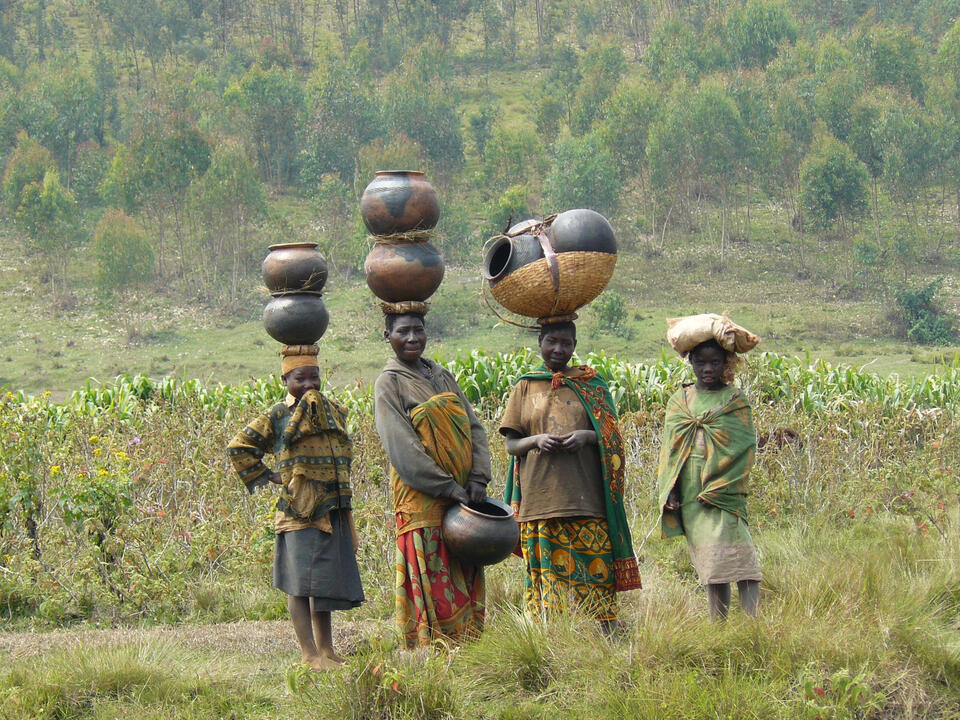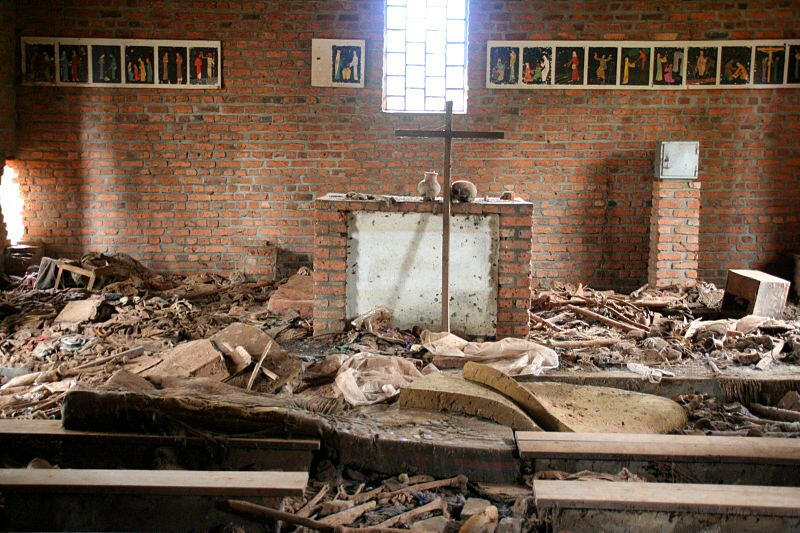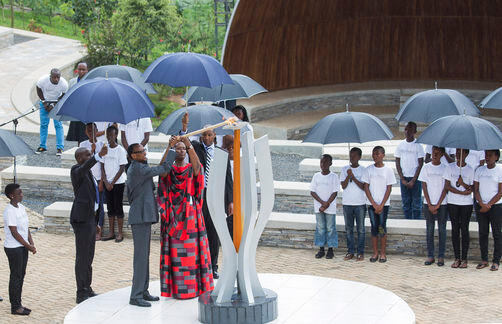remembering genocide
A Memorial to the Rwandan Genocide.
by Lydia Swetay and Annie Keenan
background

After World War I, Rwanda was handed as a "spoil of war" to Belgium from Germany. The Belgian government wanted to rule Rwanda with as little effort as possible, and capitalized on the bizarre race theories that described the Tutsi minority as superior in all aspects to the Hutu majority. In 1933, all Rwandan people received identity cards that labeled their ethnic class, which made it harder for Hutu people to pass as Tutsi. The Belgians favoring the Tutsi caused extreme tension and violence even before Rwanda gained independence. In 1959, a Hutu revolution forced 330,000 Tutsis to flee the country, and Rwanda's Tutsi monarch was sent into exile.
In the years following Rwanda's independence from Belgium, violence towards Tutsis continued. A military group placed a Hutu moderate, Major General Juvenal Habyarimana, as the sole leader of the country for two decades. A new government party called the National Revolutionary Movement for Development (NRMD) was formed by Habyarimana.
Forces made of mostly Tutsi refugees, called the Rwandese Patriotic Front (RPF), invaded Rwanda from Uganda in 1990. This led the government to direct massacres of hundreds of Tutsis. A ceasefire occurred in 1992, after negotiations happened between the government and the RPF. Habyarimana signed a power-sharing agreement for a transition government which included the RPF. This angered Hutu extremists, and they soon took horrendous measures to stop it.
genocide

On April 6, 1994, the plane carrying Rwanda's president Habyarimana and Burundi's president Ntaryamira was destroyed. This killed both leaders, and Tutsis began to be slaughtered within the hour. The Interahamwe, a Hutu militia group, led most of these killings, along with members of the Rwandan armed forces. 10 Belgian peacekeepers, and the moderate Hutu Prime Minister, were killed on April 7th. This caused extremist Hutu Power leaders to step in and take over the government on April 9th, along with the UN removal of all Belgian peacekeeping troops.
Mass killings in the capital quickly spread to the rest of the country, and most opponents of the slaughter were either killed by the extremists, or began killing Tutsis themselves. An estimated number of 800,000 Tutsi people were murdered within three months.
The Rwandese Patriotic Front had gained control of most of the country by early July, which caused 2 million people to flee from Rwanda. The RPF formed a new coalition government with a Hutu president and a Tutsi vice president. The National Revolutionary Movement for Development was outlawed, and references to ethnicity were banned in a constitution developed in 2003.
Aftermath

In October 1994, the first international genocide trial since the Nuremberg trials occurred. This was the International Criminal Tribunal for Rwanda, and they began trying high-ranking officials in 1995. Because many of the Hutu extremists fled the country after the genocide, the process of trying them was difficult. The trials continued for ten years.
In An Ordinary Man by Paul Rusesabagina, he describes some of the memorials to the genocide that are located in Rwanda. One of them is a church located in a village south of Kigali. The church is no longer a place of worship, and is instead an official memorial for the genocide, as well as a crypt. He explains how there are burlap bags full of skulls, and an open tomb with thousands of skeletons. There is a purple cloth draped sign in the front of the room with the words "Never Again" pledged on it in four different languages.
© Untitled. All rights reserved.
Information
-Rusesabagina, Paul. An Ordinary Man. Bloomsbury Publishing, 2014.
-History.com Editors. “Rwandan Genocide.” History.com, A&E Television Networks, 14 Oct. 2009, https://www.history.com/topics/africa/rwandan-genocide.
Images
-Website background
-Background
-Genocide
-Aftermath


